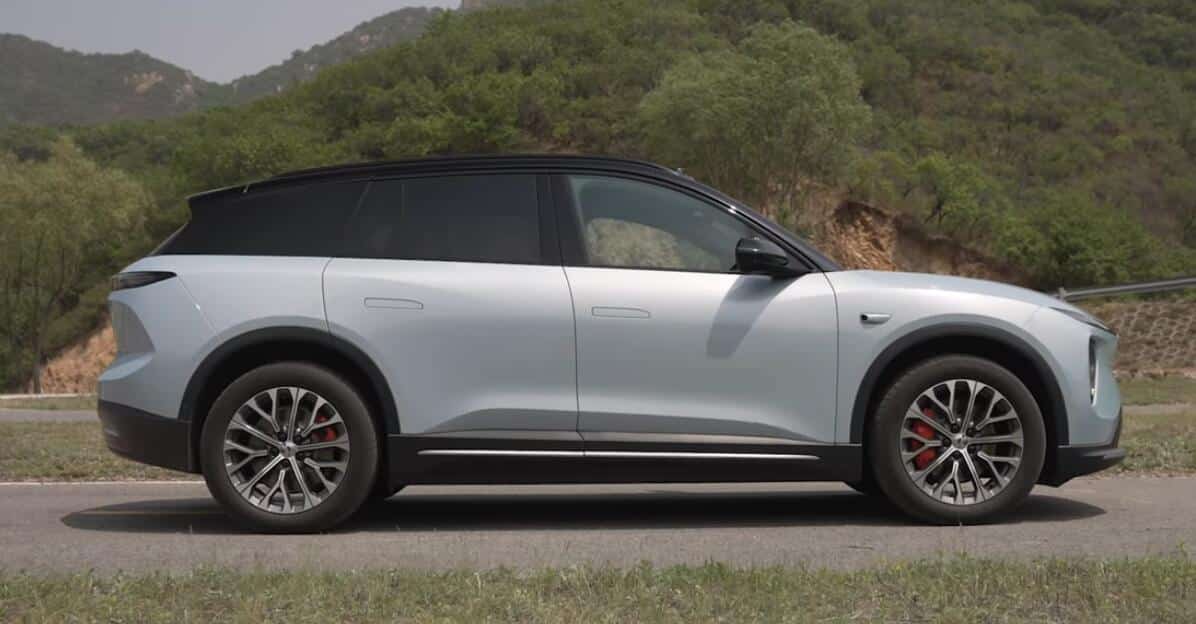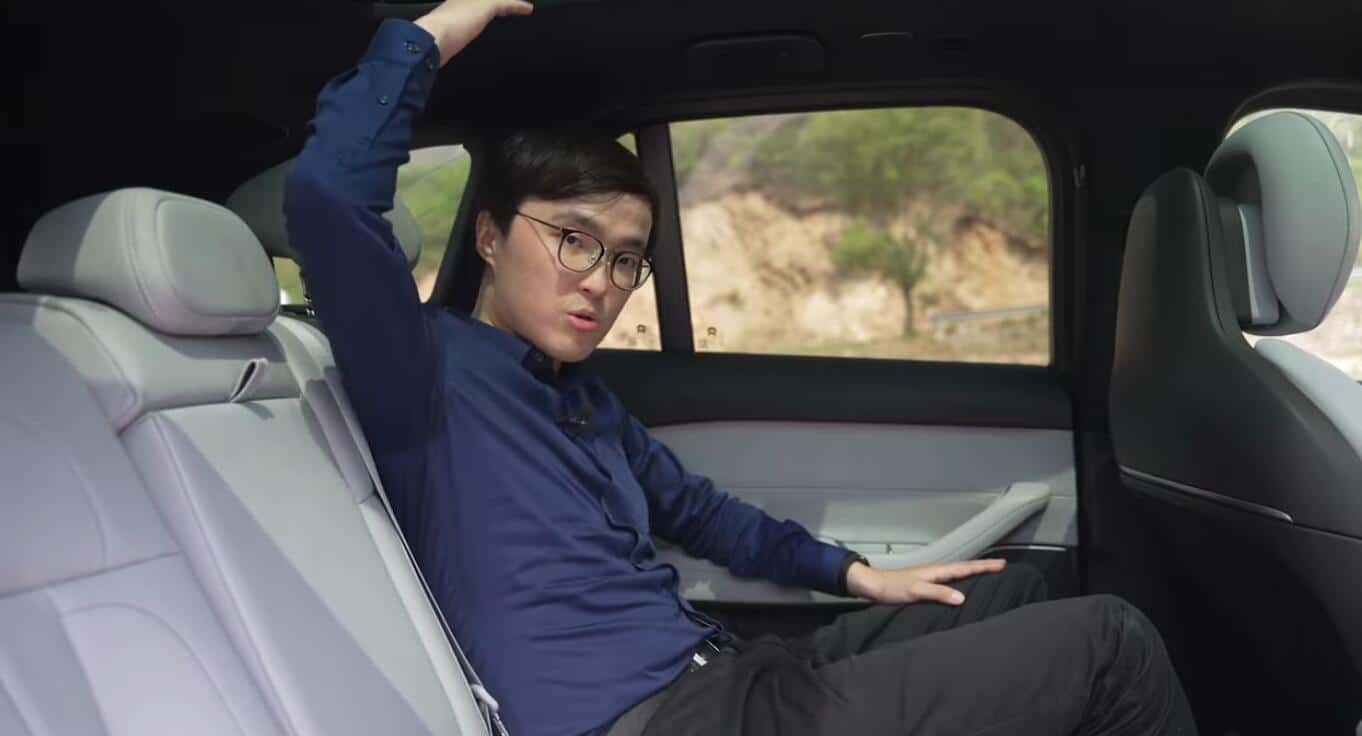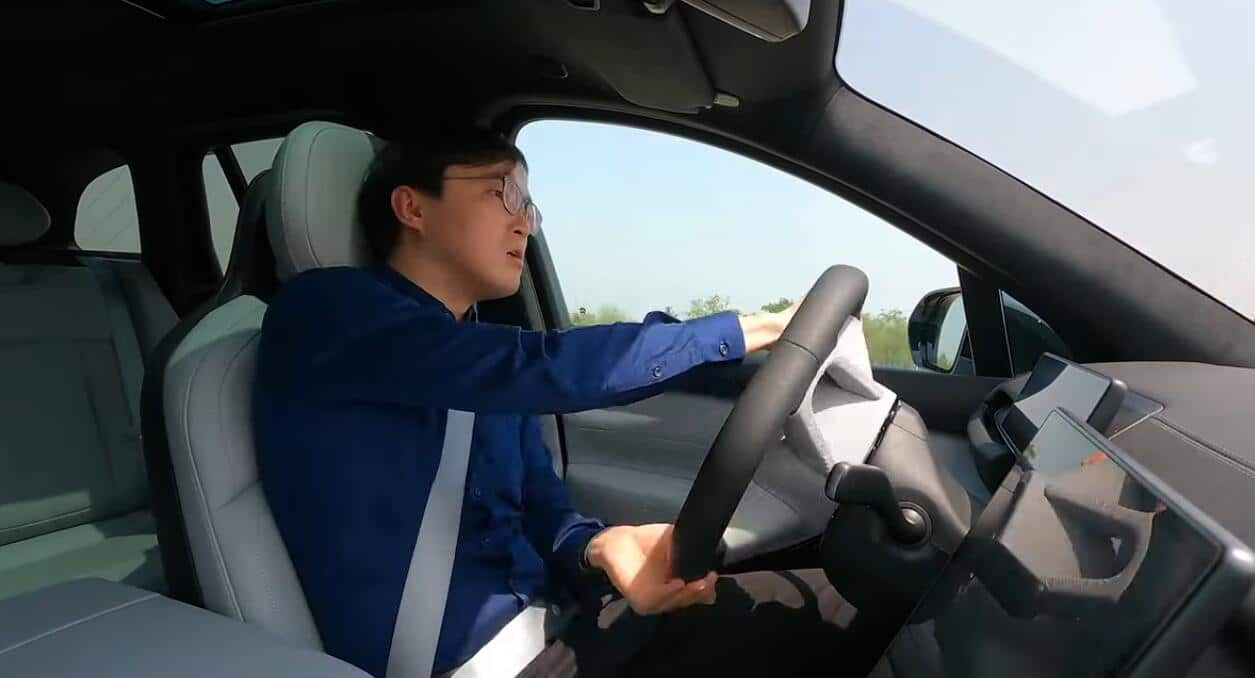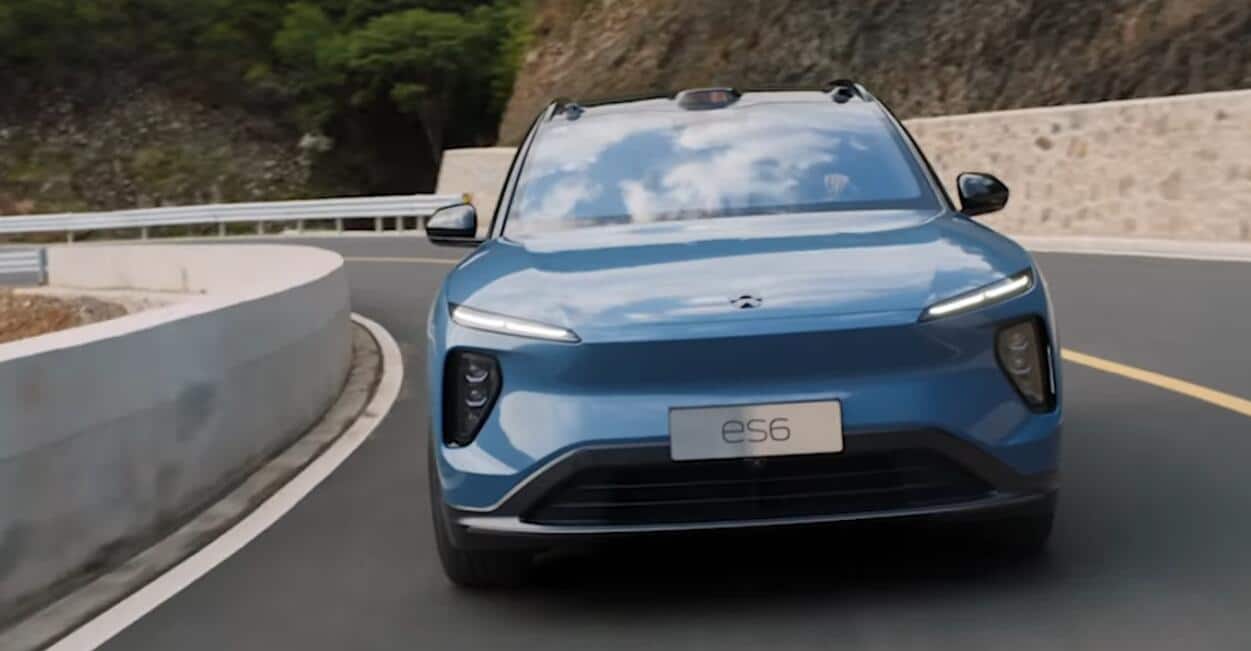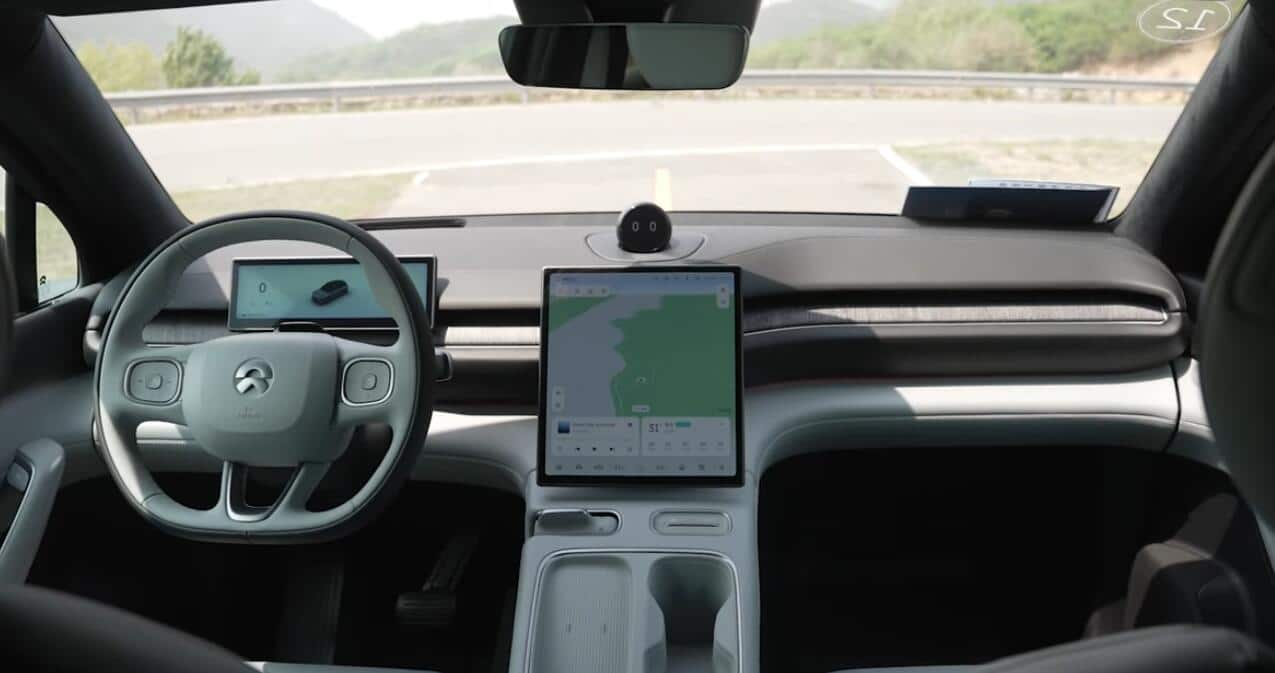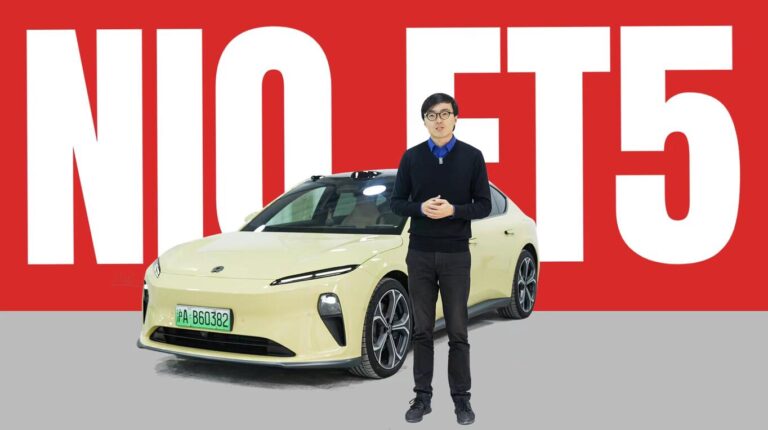Overall, the ES6 is a very accomplished car. I cannot even pick an obvious problem apart from that lack of storage on the back of the front seat.
This is a guest post by Haoran Zhou, previously a member of Nio's PR team in China. The review was originally published as a video on the YouTube channel Telescope望远镜.
Hello and welcome to the Telescope. Every week we bring you fresh insight from the biggest car market in the world today.
We're on the launch of the Nio ES6. With over 127k units sold, the ES6 was, is, and by the looks of today, always will be Nio's biggest seller.
I know I said that with the ET5, but some people are not happy with some of the compromises Nio made on the ET5. Because of the battery swap system, for example, the seat height. They think the ride is a bit too harsh. They don't like there's not enough room in the back.
None of those problems exist on the ES6. This finally is the complete package.
The color we have here today is the stratospheric blue. This is the only standard color that's not black, white, and gray. So, this is going to be a very popular color.
We are on the optional twenty-inch wheels. I think this is only €600 extra. And this is on the low rolling resistance Goodyear tire.
In a moment you will see some of the performance footage we did on the airfield. This low rolling resistance tire when you are deliberately trying to extract performance figures out of it there is a difference between this and the Pirelli. But most of the time, I recommend people just buy this.
Several features on the exterior. First is this much bigger air curtain to send some airflow to seal off all of the turbulence and the wake of the front wheels. The second feature is only noticeable at certain angles, but once you notice that you cannot unseen it. This fully flush side window. The B-pillar, C-pillar and D-pillar no longer sticks out. It is fully flush with the side window.
This feature is pioneered by the Porsche Panamera. It's also present on the latest Range Rover. This is a design feature but it also has an aerodynamic benefit. Because once you hide all of these pillars away, the airflow from A-Pillar onwards will stay attached all the way to the rear of the car. That cuts drag.
All of these contribute to the 0.25 drag coefficient for this relatively boxy SUV. This is not a coupe SUV. You will find a coupe SUV that has a lower drag coefficient than this. But you will not find another traditional upright SUV that is as slippery as this.
The ES6 of course has all the cameras and a lidar that is standard on all of the NT 2.0 platform Nio models. This will have all the capabilities we showed you earlier in the ET7 NOP+ video. This of course being a Nio can battery swap.
We did a quick swap on the way here. So this car as big and as wide and as heavy as it is, is actually the most potent long-distance electric SUV on the market today. It's irrelevant about its range. It's so strong on long-distance driving purely because of that battery swap.
The new ES6 is about fifty millimeters lower in height compared to the previous generation, which is actually quite significant. You really see it on the rear of the car. They put more shape into this rear body.
This crease here is actually an aerodynamic feature called "the departure curve" being integrated as a design element. This basically sends the airflow away from the car. This deliberately separates the airflow from following the body all the way around, creating more drag.
This boot is competitive in its class in terms of capacity. This is about 580 liters. So it's right in between the coupe version of the Porsche Cayenne and the regular Porsche Cayenne. You also have over 100 liters of underfloor storage. So practicality wise this is competitive in its class.
I know we already did a static review of the ES6. But at that time that was before the press conference. We were not allowed to sit in the only ES6 available at the time. Now sitting in the car one thing i can tell this windscreen is much smaller in terms of opening area than the previous generation ES6.
I think this is where the lowered fifty-millimeter height comes in. To give an example the previous ES6 feels like it has a windscreen that is as big as a Range Rover Sport. This is more of a BMW X3 size windscreen. You probably don't know what I'm talking about. But
If you have sat in the previous generation ES6, now sitting here, this is the biggest difference in terms of overall visibility that you can tell. The rest of the cabin is 95 percent Nio ES7, which means I think is too good for the intended role of the ES6. The only area you can tell that this car is trying to cut some cost is the lower half of the door. It's using the same recycled plastic fiber seen on the ET5.
In the rear cabin, it's surprisingly spacious. The wheelbase has grown by 15mm. The headroom is actually better than the previous ES6 because they drop the floor by as much as, I think, 9-10cm. That is a huge amount in terms of packaging.
They expanded the panoramic glass, so you get a little bit more room by having the glass extended all the way to the top of your head.
Another important area is the seats. Because the slimmer the seat, especially the seatback, the more room you're going to get for the rear passenger. This seat looks significantly slimmer than the previous generation ES6. That has very bulky, sporty-looking seats. Looks cool but it takes up a lot of space.
This is an in-house developed seat system and it does look much slimmer. But one area I still don't understand is why there is still no storage space on the back of the front seats. I mean this may eat away 2cm of knee room. You have more than two centimeters of knee room available. I'm five foot eleven. This is easily doable if you want to add a storage compartment.
We are on an airstrip to demonstrate the performance, but I don't think there's going to be any doubt about this. All Nio models up until this point have an excessive amount of performance. This is no exception. 490ps, 4.5s to a hundred kph claimed. We're going to show you how does that feel like.
This is on the low-rolling-resistance tire. If we are on the Pirelli P-Zero, this should be even better, especially the braking.
The next part is where I was surprised. I actually drove this car briefly about two weeks ago on a damp track. On the solemn 21m apart, the standard setup, ES6 can regularly maintain close to 60 kph. I have recently driven the best-handling petrol-powered SUV on an F1 track.
That car can also only maintain close to 60 kph. So this car's solemn performance is unusually good. I need to sample more high-performance electric SUVs to see if this is an attribute specific to the ES6 or if it's just that all-electric SUVs are very good at this slalom test.
Now we are out of the airstrip and into the real world. This is a closed-off, very nice piece of mountain road that it is reserved for the ES6 test drive. I am happy to report that this is probably the Nio that most people wanted.
I still prefer the ET5 because it is firmer and sportier. This generation of ES6 is head and shoulders above the previous generation ES6. I criticized the dynamics of the first-generation Nio SUVs in the original ES8 review. I thought it was too comfort biased. The whole car is very floaty. This car is not floaty at all.
Nio achieved all of that improvement while making the spring rate on the suspension softer. Overall, you feel this car is a lot more stable. And it grips the road much better than the previous generation ES6 with none of the wobbly sensations.
Another highlight is the ESP system on this car. You probably saw earlier in a slalom test that it's achieving very good average speed. On a closed-off airstrip and also on these mountain roads, we've tested back-to-back to BMW X3.
It's surprising that, to me anyway, the X3 feels like the more conservative setup on the ESP system. I never thought that day would come for Nio to give the drivers more liberty on the body control of the car.
Another aspect that you know this generation has made a huge leap forward is just that sense of size this car feels on the road. This feels like a much smaller car because the body is and especially the rear and follows the direction so much better.
The previous generation ES6 on the road feels as big as the ES8 while being significantly shorter. This feels like a much smaller car although actually on the size they are virtually the same.
All the time I've been speaking to you on camera, I'm actually in the sport mode which is not a mode that I will use on a previous ES6. All Nio cars previously, they all have a lot of performance. But you never felt like they're set up for enthusiastic driving.
I think this car is set up for the sport mode. Even the sport plus mode is much more usable. For the previous generation cars, not just the ES6, the ES8, and EC6 in general, I will only use the sport plus mode when I was trying to demonstrate performance to new customers or new journalists.
This is actually in daily driving, even the sport plus mode is much more usable. That's just another area you know this car is so much more developed than the previous generation.
Overall, the ES6 is a very accomplished car. I cannot even pick an obvious problem apart from that lack of storage on the back of the front seat.
It's big enough. It's very well made. It's very luxurious inside. It can battery swap. It has very strong autonomous driving hardware. Currently, on software this is behind the Avatar we reviewed a week ago and Xpeng on the urban assisted driving functions. But Nio will have that function ready before the end of this year.
But currently, the biggest talking point on the ES6 is not about the car itself, because we know how good the ES6 can be. And it really is as good as we expected. But it's about the price.
If I put my ex-Nio employee hat on, and look at the product lineup as a whole. I can very easily give you a very educated guess on the price of this ES6. Actually, I already did that in the static review of the ES6. I guess it will be priced around 358-368k RMB. By the time you're watching this video, you would have already known whether my guess is correct or not.
Because we are filming on May 16, about nine days before the actual launch. I think if you look at this car close enough, you would come to my conclusion that the ES6 is easily worthy of that price. However, whether the market has the patience to find that out, whether the customers have the patience to find that out, is a separate question that I cannot answer.
That is all from the Telescope today. If you enjoy this video, keep watching, keep subscribing, more videos coming along very soon.


